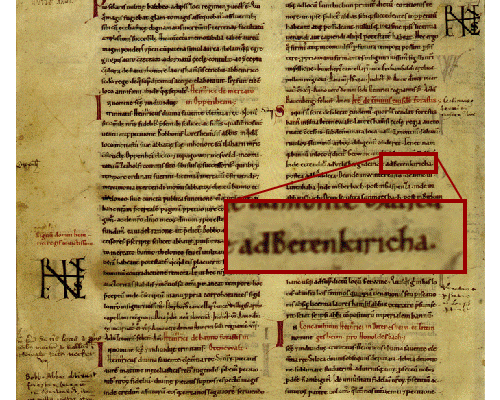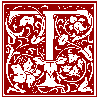|

The first mention of Betenkiricha
 he Lorsch Codex (Codex Laureshamensis) is a register of the local estates, containing over 3800 entries listing numerous transactions which took place at the time. It was compiled approx. between 1170 and 1175 at the Abbey of Lorsch (Monastery of Saint Nazarius) but records information that goes back to the beginning of its church in the 10th century. A sort of local Domesday Book it relates
to many documents that have long since disappeared. This compilation provides
first written proof of the existence of many local towns and villages. he Lorsch Codex (Codex Laureshamensis) is a register of the local estates, containing over 3800 entries listing numerous transactions which took place at the time. It was compiled approx. between 1170 and 1175 at the Abbey of Lorsch (Monastery of Saint Nazarius) but records information that goes back to the beginning of its church in the 10th century. A sort of local Domesday Book it relates
to many documents that have long since disappeared. This compilation provides
first written proof of the existence of many local towns and villages.
The book can
still be admired in its full glory at the Bavarian state archives in Würzburg.
It is
33,5
x 46 cm large and covered by a wooden plate of beech sheathed in leather. The 230 parchment pages are beautifully enriched with pictures in gold and bright colours.
The Abbey of
Lorsch was founded in 764 by a Frankonian count as a proprietary church and soon became a very important centre of power. Popes and emperors lavishly favoured the abbey with gifts and estates increasing its wealth and power even further. It even became a sovereign principality in its own right. In 1232 it was integrated into the important diocese of Mainz.
In the course
of time though, accelerated by many conflicts, such as the Investiture Controversy of the 11th and 12th centuries, it lost this wealth and power and was finally dissolved in the mid 16th century. At the time its library was removed to Heidelberg and finally crates of valuable documents were dispatched to the Vatican where they are still being kept in the library as the "Biblioteca Palatina" collection. During the 30 years' war (1618-1648), which ravaged through the central parts
Germany causing great destruction and poverty, this part of Germany even became Bavarian. This time also saw a
great deal of
demolition at Lorsch with the French troops finally razing it to the ground in the 9 years' war (1688-1697). The Napoleonic wars (early 19th century) completed the act and over the years the rubble was then used as building material.
All that is
left of the one-time glorious abbey buildings is the outline of the foundations and the still well preserved and very impressive entrance hall (Königshalle) from around 800. It is UNESCO listed and attracts a large number of tourists as well as many historians being an important centre of historical research. The quaint town of Lorsch itself (population 13.000) is now part of the district of Bergstrasse.
Compiled by Johnny Glover
|